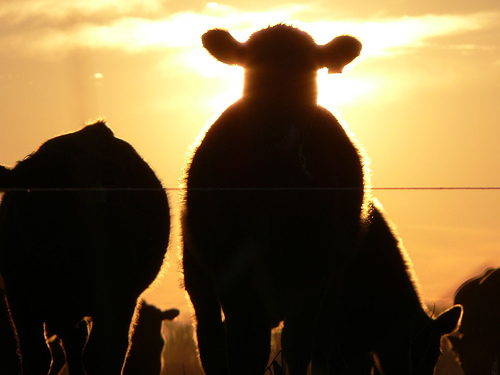
Time for a 180 on Cows and Climate
I listen to many talks by highly qualified scientists and others deeply concerned about our future, as well they might be. Some are concerned about climate change, others about starvation. In their summary remarks – I wait for it: Their suggestions for how we can mitigate disaster always include a well-meant suggestion that we eat less meat on the grounds that to do so will liberate more resources to grow human food. Few seem to question this supposed cause and effect.
January 5, 2015 | Source: Maine Organic Farmers and Gardeners Association | by Joann S. Grohman
I listen to many talks by highly qualified scientists and others deeply concerned about our future, as well they might be. Some are concerned about climate change, others about starvation. In their summary remarks – I wait for it: Their suggestions for how we can mitigate disaster always include a well-meant suggestion that we eat less meat on the grounds that to do so will liberate more resources to grow human food. Few seem to question this supposed cause and effect.
Countering Cows’ Negative Press
Cattle are not competing with humans for grass, their real food. The fact that corn and soy are being fed to animals reflects the artificial circumstances in which the animals are being kept. Cows are being criticized for making inefficient use of what is not their natural food. This use of land and feed is part of the agribusiness/CAFO (Concentrated Animal Feeding Operation – “factory farms”) complex. A more courageous suggestion would be to banish CAFOs and feed animals locally on their natural food. This would eliminate both competition for grain and the CO2 burden associated with its commercial production.
Furthermore there is no shortage of land. An artificial competition has been set up leaving animals, especially cows, as offenders. There is no shortage of land or resources for local food production, although restrictive zoning in the United States and land grabs in many areas inhibit current use by local, diversified growers. Food production in an integrated small farm system can be far more productive per acre, since all the different parts support each other, plus the system benefits from the hand of the owner. As they used to say, “The eye of the master fattens the livestock.” The cow’s manure goes to feed the soil instead of causing pollution. This feeds crops, which feed humans and other non-ruminant animals.
Simon Fairlie, in his wonderfully readable and important book Meat, the Benign Extravagance, devotes an especially witty chapter to the water requirements of cows. Fairlie spent an entire year trying to find the basic scientific studies that would support certain allegations – such as that cows use enough water to float a battleship, or that a cow uses 25,000 gallons of water for every pound of meat. Some misconceptions about cattle seem to have originated with some germ of fact on which tottering accusations are perched; but for these water claims, there is nothing. As a reality check, Fairlie gives us the life story of his steer, Bramley. For a year and a half on his acre of grass, Bramley was satisfied with his tub of 10 gallons of water per day. Most of this water Bramley used to anoint the grass. The rest left his body as vapor or was incorporated into his flesh.
In 2009, a United Nations Food and Agriculture Organization (UNFAO) paper entitled “Livestock’s Long Shadow” published the statement that livestock accounted for 17 percent of CO2 contributions to the atmosphere – more than the contributions from transportation. This claim was soundly refuted by qualified experts within hours of publication – but too late. The claim appears only in the introduction to the publication and is not supported within the text of the paper itself, yet reporters seized upon and trumpeted it around the world. It has become an unchallenged meme. For reasons best known to himself, the author of the introduction bundled everything from the manufacture of the tractors that produced the animal feed, the milling and transportation of the feed, and everything else related to livestock production into their fossil fuel account. In the case of transportation, he counted only direct use of fossil fuel when driving. This exaggerated fossil fuel use by livestock has no validity, even within the agribusiness model of livestock management. And it bears repeating: The natural diet of cattle is grass.
